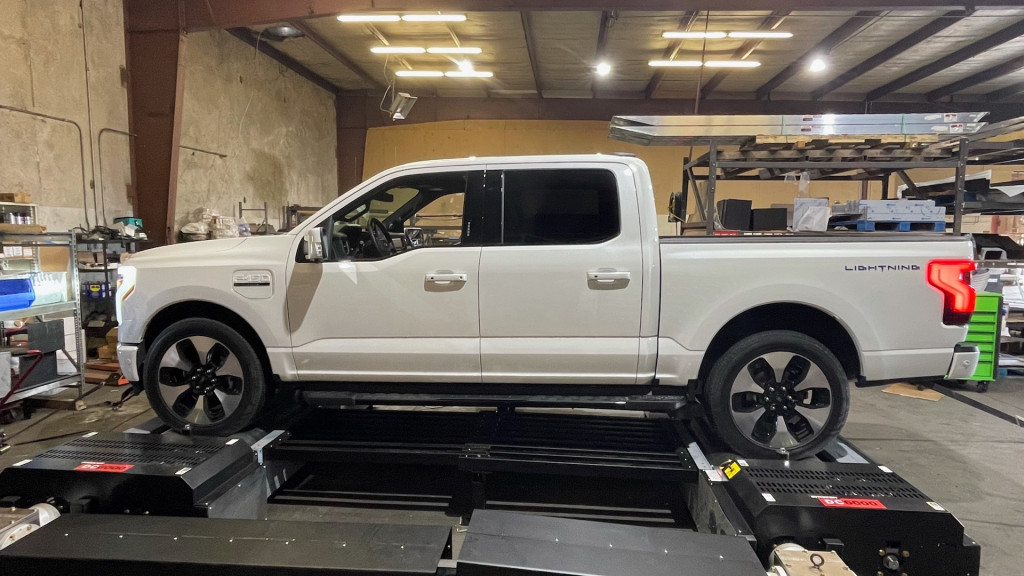A 2022 Ford F-150 Lightning has been independently dyno-tested for the first time. The test, which proved challenging to conduct, showed that Ford's all-electric pickup truck comes close to its factory-rated output.
An extended-range model was used in the test, which was conducted by the Texas Truck Show with assistance from dyno manufacturer Dynocom. Ford rates that version at 580 hp and 775 lb-ft of torque, and the dyno showed 565 hp and 784 lb-ft of torque at the wheels. That represents a 3% loss in horsepower from the motors to the wheels, but slightly more torque than the published specs.

2022 Ford F-150 Lightning dyno test
Just getting that result was difficult, Brian Raupe, host of the Texas Truck Show, explained in an email to Motor Authority. At 145.5 inches at the hub centers, the Lightning's wheelbase exceeded the limits of most all-wheel-drive dynos testers had access to. These tend to be used for smaller sports cars and max out at a 125-inch wheelbase.
With performance trucks, the solution would typically be to run in rear-wheel drive on just one set of rollers. But that wasn't an option with the dual-motor Lightning. Dynocom ended up modifying one of its DC-6000 dynos to accommodate the Lightning's longer wheelbase. The DC-6000 uses a gearbox to synchronize the two rollers. That's more accurate than typical belt systems, which are prone to stretching, Raupe noted.
Dyno tests also typically rely on engine speed, but that's not a relevant figure for EVs because of their instant torque. Dynocom measured wheel speed instead. A final drive ratio is also needed for calculations, but Ford doesn't publish one for the Lightning. Using wheel speed and tire height, testers estimated a final drive of 2:1 for each of the Lightning's motors.
Finally, the Lightning initially cut power down to less than 200 hp around 70 mph, then would ramp back up to full power on the way to an indicated 107-mph top speed. This was due to excessive acceleration without real-world weight and wind resistance, Raupe said. Basically, the truck thought it something was wrong and limited power. The workaround was using software to apply added resistance to the dyno rollers, simulating real-world conditions.